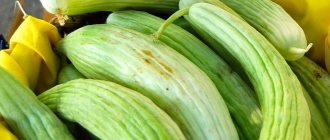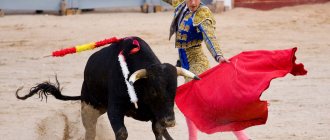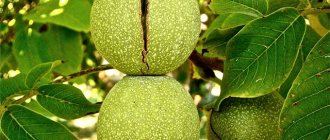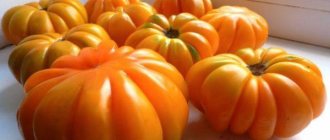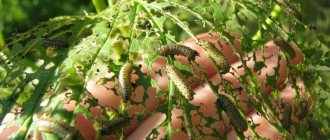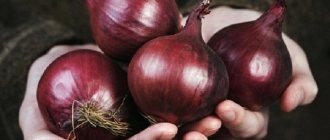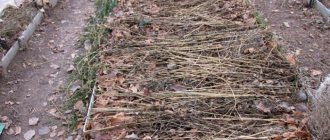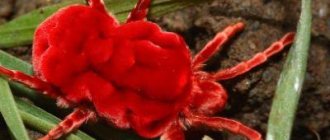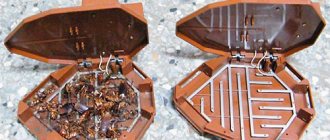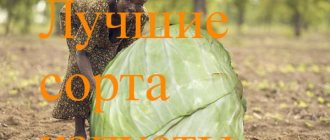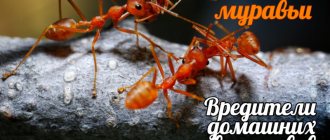Description and characteristics of the Yalta red onion variety
Onions also have a second name - “Crimean”. Both of them are associated with the place where the vegetable grows. Basically, this red onion “lives” in the territory of Greater Yalta. But it is allowed to plant it in other regions. True, for this you will have to work hard to create ideal conditions in which the vegetable can fully develop.
An unusual variety of onion was bred in the middle of the last century by employees of the Nikitsky Botanical Garden. Successful results were achieved by crossing several varieties of crops at once. These included sweet Spanish onions, as well as Portuguese flat and round varieties (purple).
The table will allow you to get acquainted with the characteristics of the Yalta onion in more detail:
| Options | Description |
| Onion feathers | They have a rich green color. They grow large and are completely covered with a noticeable waxy coating. |
| Bulb color | Rich dark purple throughout the fruit. In this case, the onion may have a reddish or pink tint. |
| Shape and weight | The bulbs are slightly flattened. As a result, their shape is flat-round. On average, each fruit weighs approximately 170-270 g. |
| External scales | They are dry, but dense and strong. The structure of the husk resembles paper. |
| Internal scales | The red onion consists of 7 layers at once. All of them are juicy and are about 5 mm thick. The onion pulp is white with a slight appetizing pinkish tint. The scales are difficult to separate from each other. |
| Aroma and taste | Real Crimean onions do not have a very rich taste, since they contain a minimum of essential oils. Its aroma does not irritate mucous membranes. |
| Purpose | This is a salad onion, which is often served fresh - in large rings. It is well suited for decorating dishes. Yalta onions can be baked or grilled with butter and salt until slightly softened. It is not recommended to expose such a vegetable to prolonged heating. |
When studying the detailed characteristics of this type of vegetable, you need to remember that they are sometimes used by unscrupulous traders. For example, they sometimes soak ordinary white onions in water with ink. As a result, the vegetable changes color, but it turns out too dark or with an unappetizing bluish tint.
In order not to buy such a low-quality product, when choosing fruits, it is important to pay attention to its other additional parameters: shape, special scales inside and outside, non-irritating, soft aroma.
How to distinguish real Crimean onions from fakes
Since growing real Yalta onions is quite labor-intensive, enterprising traders often pass off other, fake varieties as them. Of course, they will not do any harm, but their taste and beneficial properties will be very different from the original. Determining whether it is a fake or not can be difficult, but not impossible. Therefore, it is important to know how to distinguish Crimean red onions from other varieties that they resemble.
| Parameter | Yalta onion | Other varieties |
| Bulb | Flat, round, large | Flattened, round, medium or large |
| Internal scales | Thick, up to 7 mm | Thin, no more than 5 mm |
| Number of layers per cut | 7 | Variable quantity, may be different or the same |
| Taste | Sweet | In addition to sweetness, bitterness will also be felt |
| Smell | Absent | Present |
| Keeping quality | 2-4 months | Various |
| Sales time | July | Any time |
Advantages and disadvantages
Yalta red onion, the cultivation of which from seeds is described in detail later in the article, has its pros and cons. The main advantage of this vegetable is its unusual, bright, pleasant taste. It is sweetish and rich. Because of this indicator, Crimean onions are often served raw.
But this vegetable gained its unprecedented popularity not only due to its special taste. The Yalta onion also has a rich composition. As a result, such a product, when consumed regularly, strengthens the immune system, cleanses the body of parasites (naturally), reduces the intensity of inflammatory processes, as well as the level of “bad” cholesterol in the blood.
Distinctive features of red Yalta onion.
In addition, consuming red sweet onions has a beneficial effect on the functioning of the entire gastrointestinal tract and improves appearance (especially hair and skin).
But it is important to consume the vegetable in moderation. It will be necessary to completely eliminate it if you are allergic to any components from the chemical composition of the product. And eat with extreme caution - in case of gastrointestinal ulcers, gastritis or increased stomach acidity.
Among the disadvantages of onions it should be noted:
- difficulty in growing in other places except Crimea;
- short shelf life;
- high financial and labor costs when growing vegetables in cold regions.
This list also includes the frequent sale of painted white onions instead of real red Crimean onions. Not all buyers can distinguish a real sweet vegetable from one painted with ink.
Use in cooking
It is preferable to eat Yalta onions fresh. Snacks are prepared from the red vegetable; it is added to side dishes and salads. The bulbs go well with meat, fish, and muscat wine. The following dishes are prepared with the addition of red product:
- shashlik;
- soups;
- baked chicken;
- meatloaf;
- pizza;
- savory baked goods;
- pickled tomatoes.
Diced Crimean onions can be added to stews and savory roasts, or added to a hot dog or burger. The cooked food is juicy and has a pleasant taste. Yalta onions are a tasty choice for people who care about their health. A recipe for Crimean salad is highlighted. Components:
- Crimean onion – 2 pcs.;
- salt, herbs, vegetable oil;
- white cabbage – 350 g;
- bell pepper – 2 pcs.
How to cook:
- Cut the vegetables: red onion into rings, pepper into strips, cabbage into strips.
- Chopping greens.
- Mix the ingredients.
- Salt, season with oil.
The product is a must-have vegetable in the kitchen pantry.
What it looks like, ripening time and yield
Yalta red onion, which is difficult to grow from seeds in cold regions, differs from other varieties of the same vegetable in its appearance. These are usually quite large (up to 300 g each), round-flat fruits.
On top they are covered with a rich purple husk, and inside they contain pinkish, sweet and juicy pulp. The vegetable has large bright feathers and leaves with a waxy coating.
The growing season of the crop usually lasts 140-160 days. Therefore, the variety is called mid-season. The yield of the Yalta onion is not too high. This explains its high cost. From 1 hectare of garden plot, with a competent approach to the issue, it is possible to collect up to 80 tons of crop.
Reproduction
Yalta onions are grown from seeds. They can be purchased in specialized stores or directly from farmers working with this crop. Seeds can be sown directly into the ground. This article will tell you how to grow onions from seeds.
However, if you want to get a good harvest in the first year and harvest it as early as possible, it is recommended to use the seedling method. You can start working with it already in early March, so that by the end of the frosts on the ground, you can plant the seedlings in open soil.
After stratification, the seeds are laid out on a damp surface so that they sprout.
Features of planting onions of the Yalta variety
Crimean onions are grown not from bulbs, but in a special seedling method - from seeds. First they become seedlings, after which the seedlings are planted in a permanent place. Before planting a vegetable, the gardener needs to choose the optimal site for this in the country, calculate the optimal timing, and then strictly follow the correct technology.
Like any other onion, its Crimean variety is biennial. In the first year, sets are grown from seeds. And already in the second, you can expect a full-fledged large-scale harvest.
Planting dates and preparatory work
The vegetable is sown as seedlings in late winter - early spring. Optimally - no later than the first half of March. When the seedlings are already strong enough, they are transferred to a permanent place of growth. This usually happens in April - from the first days to the middle of the month.
To protect the crop from diseases in the future, it is important to properly prepare the seeds. To do this, they are filled with the Baikal EM-1 solution so that in the end they are completely covered with liquid. Another option for proper treatment before planting is spraying with a weak solution of potassium permanganate.
This procedure is also an effective prevention of vegetable infection by parasites and various common diseases.
The best soil option for Yalta onions is Crimean Tauride shale. It has many features. So, during the day this type of soil warms up well under the sun, and at night it continues to give its heat to the crop. It is to this system that onions owe their bright sweet taste.
If you want to create conditions in another place that are as close to natural as possible, then you will need to take care of the correct greenhouse effect for the vegetable. To organize the latter, an impressive top layer of soil (about 20 cm) is removed from the garden bed.
At least 6-7 fresh manure is distributed on top. The resulting layer is covered with the previously removed soil. And already under such conditions the seedlings are planted. The manure will rot and produce the heat that onions require day and night in other regions.
If the soil is depleted, then before planting plants in it, you will need to properly prepare the foundation. To do this, the soil is thoroughly fertilized in advance. The best time is in the spring. An excellent feeding option would be potassium salt or ammonium nitrate.
Selecting a location
It is especially important to choose the right place where you plan to grow Yalta onions. This should be an open and well-lit area of the garden. Let the sun's rays fall on it.
When growing onions in Crimea, additional preparation of the soil for planting is required only when it is severely depleted. But in the middle zone, more thorough measures are needed.
Even six months before planting the seedlings, the selected area of the site is carefully dug up, weeded and leveled. In the spring it is fertilized and only after that the Yalta onion can be planted.
Predecessors
When choosing a place to grow a crop, you will also need to take into account what vegetables were planted on the site previously. If these were any varieties of onions, then it is better to look for another zone.
Good “correct” predecessors can be called:
- all the greens;
- potatoes;
- tomatoes;
- cabbage
Seed preparation
Seeds also require mandatory preliminary preparation for planting. For example, it is important to disinfect them. As noted above, this can be done in two ways. The simplest is treatment with a solution of potassium permanganate. It should be 1%. The resulting solution completely covers all the seeds and leaves in this form for about 35-40 minutes. There is no need to rinse them further.
In order for the seeds to germinate better, experienced summer residents advise soaking them in growth stimulants. The technology in this case will depend on the chosen tool. A detailed scheme for the use of such stimulants is usually published on their packaging.
Preparing the bed and soil for planting
By the beginning of October, all soil preparation should be completed. Necessary:
- weed and remove weeds;
- apply fertilizer (preferably organic);
- carry out deep digging of the earth, followed by harrowing.
All this preparatory work will help the soil accumulate moisture over the winter. Before directly planting seedlings in the ground in the spring, the soil must be kept clean and loose. Choose a place for the garden bed where the sun can warm the ground all day. You should abandon the area where melt water stagnates for a long time.
Best predecessors:
- peas;
- beans;
- potato;
- tomatoes.
Do not use a site where other types of onions grew.
Landing technology
In order for a gardener to successfully grow Yalta onions on his plot, it is important to follow the technology for planting this crop:
- Prepare convenient, spacious containers for seedlings. Their optimal depth is about 15 cm.
- Choose a suitable substrate. An excellent option would be a mixture of turf soil and humus in equal quantities.
- Add fertilizer to the base. It is best to take a ready-made mineral complex for this. 50 g will be enough.
- In each selected container, carefully make furrows 0.5-1 cm deep. They should be located at a distance of 5-6 cm from each other.
- Distribute the prepared seeds evenly over the resulting furrows.
- Sprinkle the entire structure with soil mixture on top and water thoroughly.
- Leave the crops at a temperature within +18-+20 degrees. In such conditions, containers with seedlings will remain until the first shoots appear.
- After germination of the seedlings, the room temperature drops to +12 degrees. And after 7-8 days it rises again to +16-+18 degrees.
During the period of active seedling growth, it requires special care. It is necessary to thoroughly moisten the soil daily. It is best to spray the crop with a spray bottle.
About 7-10 days before planting the vegetable in the permanent location chosen for it, you need to start hardening the onion. To do this, the plant is taken outside. On the first day, a walk of 1 hour will be enough for him. Gradually, the hardening time should be increased by 30-50 minutes.
You need to send the seedlings to their permanent place when 3-4 feathers appear on the plant.
When landing you will need:
- Mark small furrows on the bed at a distance of approximately 0.4 m from each other.
- Dig small holes in the rows. There is already a distance of about 10 cm between them.
- Send the onions into the resulting holes.
- Bury the plants with soil so that only their green part remains outside.
Transplanting seedlings into open ground
After warm weather sets in, the soil warms up and the risk of return frosts disappears, the Yalta onion seedlings can be transplanted to a permanent location. In the Moscow region this is the beginning or middle of April.
Scheme of planting seedlings in open ground:
- Before planting onions, dig up the area to a depth of at least 25-30 cm and apply fertilizer. To do this, you can use phosphorus-potassium complexes or humus with the addition of ash.
- Level the surface of the area with a rake.
- Make grooves 5 cm deep, leaving a gap of 30-40 cm between them. Instead of grooves, you can prepare planting holes.
- Place the seedlings in the grooves or holes at a distance of 10 cm from each other.
- Sprinkle the onion with soil, compact it lightly and water.
After completing the planting work, mulch the beds with Yalta onions with a thin layer of peat or humus and compact it a little.
Features of onion care
Yalta red onion requires special care when grown from seeds. A competent integrated approach involves watering, loosening and weeding the soil, and fertilizing.
Watering, loosening the soil and weeding
It is difficult to name the recommended frequency of watering Crimean onions. But at the same time, the soil should always be sufficiently moist. You can easily check this parameter directly by touch. To do this, a piece of soil crumbles. It shouldn't crumble too easily. This result suggests that the earth is dry.
Water for irrigation must be carefully prepared. To do this, it is poured in advance and left to settle. The optimal temperature for liquid is 20-22 degrees. The last thorough irrigation of the soil is carried out approximately 20 days before harvest. At the same time, the beds with onions should be watered, moistening the row spacing.
Once the soil is sufficiently wet, it must be loosened well. This will allow the soil to “breathe” freely. If you neglect the procedure, a crust will form on the surface of the earth. In this case, the root system will not receive enough oxygen.
Be sure to weed the beds. This should be done as the weeds grow. The most convenient way to remove weeds is by loosening the top of the soil. For this, an accessory with wide metal teeth is used.
Fertilizing
Fertilizers are very important for the normal growth of Crimean onions. It is recommended to apply them every 10 days from the very moment of planting. This process stops in the last days of July.
It is best to take the following as the main fertilizers:
- chicken manure with water, diluted in it in proportions of 1 part dry component to 10 parts liquid;
- potassium-phosphorus mixture (in the form of a solution), which you can mix yourself. The basis of this mixture is 5 liters of water. 20 g of superphosphate and 10 g of potassium chloride are dissolved in the liquid.
It is important to take only the recommended amount of nutrients for Crimean onions, without exceeding it. Too much fertilizer only worsens the condition of the crop.
How to care
If you look at the description of the Centurion onion variety, then it, like Yalta, needs weeding, loosening the soil around the plants, watering and treatment with special solutions against pests. Watering should be done so that the top layer is wet. Taking into account the type of soil and weather conditions, irrigate at intervals of 6 days. There are 15-30 liters per 1 m2.
Stop watering 3 weeks before harvest. This will allow the bulbs to ripen normally. When watering, you should use the furrow method. It is much more effective than sprinkling. Then the plant will be less susceptible to fungal infections. But is it possible to plant onions next to garlic, and how planting occurs, is indicated here.
Video shows how to care for onions:
When the weather is rainy, Yalta onions are often affected by downy mildew. To combat it, it is necessary to use systems and contact preparations. Ridomil and Arcerid are considered the most effective. When the seedlings take root, they will need to be treated with Bordeaux mixture. After 2-3 weeks, systemic fungicides can be applied. What is the technology for growing onions in a greenhouse, and how planting occurs, this information will help you understand.
Plant pests and diseases
Yalta red onion, the cultivation of which from seeds will be interesting for experienced gardeners, is resistant to major diseases and many pests. But if the crop is not properly cared for, some problems may arise. For example, if you water onions very actively and use an excessive amount of water, downy mildew can develop.
To cope with this disease, you will need to use Bordeaux mixture according to the instructions. Other drugs are also suitable for this purpose. For example, Arcerid and Ridomil.
Proper prevention will help to avoid fungal diseases of the crop. In this case, it will be necessary to treat the plantings with special means according to a special schedule. So, immediately after rooting the seedlings, use a solution of Bordeaux mixture (1%). And another 15-20 days after the first procedure - Arceride (0.4%). The same treatment is repeated 3 weeks after the second spraying.
Growing regions
Yalta red onion (growing it from seeds does not require a large investment of time and effort) is most comfortable and easiest to plant on the southern coast of Crimea. This crop is very demanding for a long warm season. The plant reacts strongly to the composition of the soil and the amount of moisture in it and in the air.
The main fields of such sweet onions today are located on the southern coast of the peninsula. For example, in the village. Simeiz, Laurel, Blue Bay. Onions can also be grown in other regions. But it doesn't have to be very cold, harsh areas. In central Russia, quality care for Yalta onions will require a lot of work.
But even in this case, all efforts may be in vain. Outside the Crimean coast, the fruits of the crop often lose their unprecedented juiciness and sweetness. As a result, the onion becomes sharper and even slightly bitter.
For the fruits of the crop to fully ripen, they require at least 4 months. This period is counted from the moment the vegetable is planted. At the same time, the plant is very sensitive to the length of daylight and does not do well in the absence of sun.
Onions require direct sunlight to grow and mature properly. Regardless of the surrounding conditions, the crop does not tolerate excessive watering. With a large amount of moisture, the onion begins to rot right in the ground.
Recipes for cooking dishes with the addition of Yalta onions
Yalta onion is a dietary product, therefore it is very actively used for preparing dishes with proper nutrition.
Crimean salad
Ingredients: Chinese cabbage—500 grams, sweet pepper—300 grams, Yalta onion—300 grams, canned corn—300 grams, fresh dill—50 grams, fresh parsley—50 grams, fresh cilantro—30 grams, sour cream 15% fat—200 grams.
Preparation: chop the cabbage not too finely, do not crush it with your hands, cut the pepper into strips, Yalta onion can be into strips, rings or half rings (if you prefer), add canned corn, drain the juice first, sprinkle with herbs, season with sour cream. If desired, add salt, which is not recommended at all if you eat properly.
In total, one hundred grams of salad contains 1.71 grams of protein, 1.83 grams of fat, 6.02 grams of carbohydrates, and 48.64 kilocalories. If desired, sour cream can be replaced with olive oil.
Vegetable salad"
Ingredients: fresh tomatoes—500 grams, fresh cucumbers—500 grams, Yalta onions—300 grams, sweet peppers—300 grams, pickled honey mushrooms—500 grams, fresh dill—50 grams, fresh parsley—50 grams, fresh cilantro—30 grams, olive oil—100 grams.
Preparation: cut the tomatoes into slices, cut the cucumbers into slices, cut the pepper into strips, place the honey mushrooms in a colander, let the marinade drain completely, do not rinse. Combine everything, sprinkle with herbs, season with olive oil, lightly add salt.
Total: one hundred grams of salad contains 1.3 grams of protein, 4.59 grams of fat, 3.82 grams of carbohydrates, 61.56 kilocalories.
“Liver” salad
Ingredients: chicken liver—500 grams, carrots—300 grams, Yalta onions—300 grams, fresh dill—50 grams, fresh parsley—50 grams, fresh cilantro—30 grams, olive oil—100 grams.
Preparation: boil chicken or turkey liver (pork is not suitable, it does not crumble at all) until tender, do not add salt, cool, cut into strips. Grate the carrots on a coarse grater, sprinkle with vinegar (apple, wine or regular vinegar), cut the Yalta onion into strips, sprinkle with vinegar. If vinegar is contraindicated for medical reasons, then dilute citric acid in water, pour over the carrots and onions, leave to marinate for 30 minutes, then drain the water. Mix chopped liver, raw carrots and onions, sprinkle with herbs, pour in olive oil, and lightly add salt. Let it brew for an hour to saturate the liver with acid and sugar from the onion.
Total: one hundred grams of this salad contains 8.08 grams of protein, 9.94 grams of fat, 4.69 grams of carbohydrates, 140.18 kilocalories.
The unique taste of sweet Yalta onions is the taste of the Black Sea resorts! Premium product. Highly recommended for consumption by coastal residents and practicing nutritionists of the country!
Harvest and storage
Yalta red onions, the easiest way to grow from seeds in Crimea, are fully ripened by the beginning of September. During this period, the vegetable can already be harvested. But this should be done carefully - in large mesh baskets. And best of all - with your hands.
The vegetable does not tolerate transportation well. In addition, it has a short shelf life. It is best to eat the collected fruits within the first 2-4 weeks.
If you plan to store the bulbs for a long time, you will need to spread the fruits on dry litter so that they do not touch each other. In this case, the place should be well ventilated. The optimal temperature for storage is +15 degrees. And the humidity level in the room should not exceed 50%, otherwise the vegetable can rot in just a few days.
But even with all possible tricks, it will not be possible to preserve Crimean onions for longer than 4-5 months. This is because vegetables contain large amounts of sugar and water.
The possible shelf life of onions should be taken into account when purchasing them. Since the vegetable is harvested already in September, and it lies poorly, it is impossible to buy it at the end of winter or spring. Therefore, all options that appear on sale are colored white onions.
Saint Luke - what you can pray for
Secrets of storing onion sets in winter before planting and in the ground
Turn to a healer in case of bodily illnesses
It doesn’t matter what kind of illness befell the believer - the confessor, by the power of Christ, is able to help from many physical ailments, as thousands of healed people talk about. Pregnant women pray to safely bear and give birth to a child. It’s no secret that even today this such a natural event can be dangerous for both mother and baby. If a surgical operation is ahead, you should also turn to St. Luke of Crimea
There are many known cases when he appeared to patients and performed complex operations himself. During treatment, you can read a prayer to the saint so that he will contribute to a speedy recovery. Luke of Crimea also helps during times of mental suffering, because he is known for his kindness to people. This can be seen even in his scientific works - people were not just faceless “diagnoses” for him, the saint always made sure that the patient felt calm and believed in the success of the operation.
Where to buy, how much do seeds cost?
Yalta onions in their already ripe form are rarely exported. Therefore, the easiest way to buy it and try it is in the Crimea in the fall.
During this period, you can find very tasty and sweet vegetables on sale. But you can easily purchase crop seeds throughout Russia.
Today they are sold in every city and have an affordable price. So, 1 bag of seeds costs on average from 30 to 50 rubles.
In its classic form, the red Yalta onion is found precisely in the Crimea. But if you wish, you can grow it from seeds in other regions.
For excellent results, you will need to follow the planting technology and provide the plant with careful, competent care.
Application in cosmetology
What is the real Yalta onion famous for? The red product is used for cosmetic purposes. Improves the condition of the skin, helps with dermatological problems. Masks based on Crimean onions for hands and face make the skin softer and restore youth. Onion juice is indispensable for acne. Its use makes age spots invisible. Red onion pulp strengthens hair follicles. To achieve the effect, rub the product into the scalp. After half an hour, the composition is washed off and the hair is thoroughly washed with shampoo.
